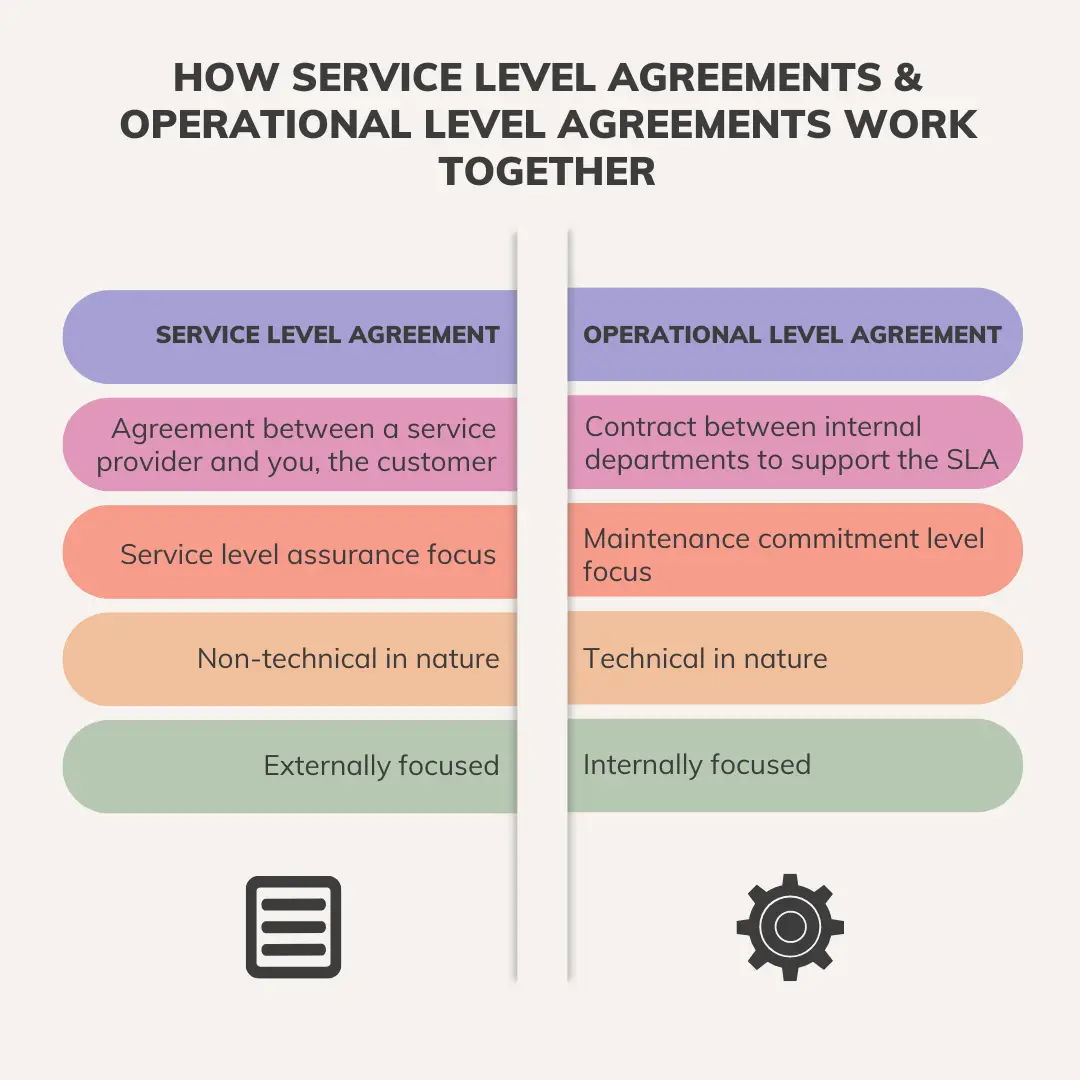Get us to call you
Fill in your details below to receive a call back quickly.
Fill in your details below to receive a call back quickly.
Fill in your details below to receive a call back quickly.
Fill in your details below to receive a call back quickly.


In the ever-evolving world of information technology, having the assurance of comprehensive, responsive and efficient managed IT services is critical for keeping your business systems humming. When it comes to choosing the right managed service provider to fit your business’s needs, it’s important to understand some of the jargon that comes with the service; in particular the difference between an Operational Level Agreement (OLA) and a Service Level Agreement (SLA).
Because IT environments are complex, managed IT services require both external and internal teams to support them, and agreement on how this will be done. An OLA and an SLA are interlocking components to this collaboration, providing assurance of seamless service delivery. But what’s the difference between an OLA and an SLA? Let’s examine both in more detail.
or fill in our online enquiry form today to contact us.
A Service Level Agreement is the contract your business has with an externally managed IT service provider that sets out the services they will provide to meet your business requirements and your expectations as their customer. SLAs will generally be standardised, and form the basis of negotiation on services to be provided under the contract.
An SLA will establish the scope of the agreement, what will be done, what is not included, and the metrics by which you can measure the success of their performance. An SLA will include:
An Operational Level Agreement, by comparison, is the technical agreement the managed IT service provider establishes internally to meet and maintain their responsibilities and requirements, as guaranteed by their SLA. An OLA is the internal service commitment, and will include, as an example:
or fill in our online enquiry form today to contact us.
The best way to explain how an OLA and SLA work together is with an analogy: if you’re building a house, your SLA is your agreement with your building project manager. Your OLA is the agreement your building project manager has with sub-contractors who will complete the work required as part of the build. They are critical agreements that work side by side to guarantee the performance of the service you are contracting.

A Service Level Agreement should include the following specifics:
An Operational Level Agreement should include the following:
As with any contract, your Service Level Agreement and Operational Level Agreement should have a mechanism for review and revision; as your business changes and scales, so do your service requirements.
Both agreements should have a clearly defined framework for periodic reviews to ensure they still fit your business needs, technical environment, workloads, and changes in technology available to you. Both your SLA and OLA are supplier contracts that need to be clearly defined, relevant and effective agreements that ensure you’re receiving comprehensive, stable and secure performance from your managed IT service provider.
Managed IT services allow you to effectively manage cost, infrastructure, communication, technology deployment and maintenance, no matter the size of your business. Your Service Level Agreement and Operational Level Agreement with your managed IT service provider is the contract element that guarantees the quality of their service delivery, and sets out the expectations of both parties.
Be wary of SLAs and OLAs that try to force a “one-size-fits-all” business approach from your supplier; both documents need to demonstrate that the provider understands the complexities of your business and the environment that you operate within. Your managed IT service provider is someone that should offer comprehensive service guarantees while working collaboratively with you to support your business.
or fill in our online enquiry form today to contact us.
Here at SouthEast IT, we’re established managed IT service providers who understand the critical importance of ensuring your business systems operate seamlessly every single day. Continuity of service, data quality and availability, network and infrastructure security, and best practice solutions form the core of what we offer businesses of all sizes. To us, you’re a name, not a number, and we pride ourselves on providing an accessible service that’s tailored to fit your requirements.
We have over 30 years’ experience in the IT industry, and have the knowledge and expertise to help keep your business and its systems running at peak performance with minimal downtime and disruption. For managed IT services from a provider that understands your needs, SouthEast IT are the professionals you can rely on.
SouthEast IT are Melbourne’s managed IT service experts, and have partner programs and IT strategies to fit your business needs, no matter what they are. Call us today to find out more about how our managed IT services and solutions can support your business.